
Mount Pleasant Mill is a windmill north of Kirton in Lindsey on the North Cliff Road in North Lincolnshire in the east of England.
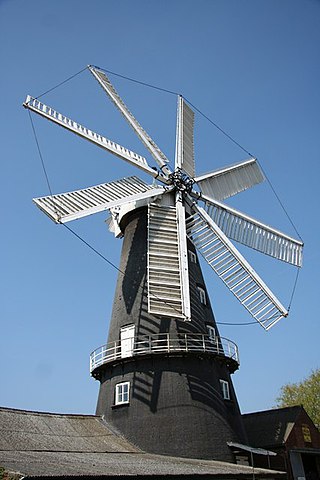
Heckington Windmill is the only eight-sailed tower windmill still standing in the United Kingdom with its sails intact.
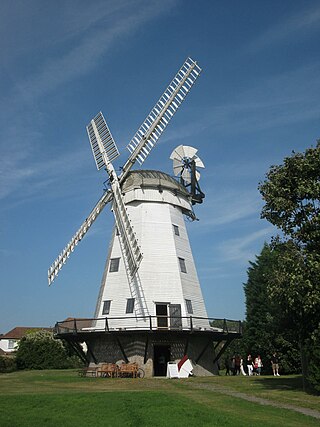
Upminster Windmill is a Grade II* listed smock mill located in Upminster in the London Borough of Havering, England. It was formerly known as Abraham's Mill and was in Essex when built. It has been restored and is a museum open to the public at selected times.

High Ham is a village and civil parish in Somerset, England. Within the parish of High Ham are the villages of High Ham and Low Ham and the hamlets of Bowdens, Henley, Paradise and Picts Hill.

Denver Windmill is a Grade II* listed tower mill at Denver, Norfolk, England. In March 2010, there were about 374,000 list entries of which 5.5% were Grade II* and even fewer were superior.

West Winch Windmill is located in the village of West Winch in the English county of Norfolk. West Winch is two miles south of King’s Lynn. The mill is a grade II listed building.

Billingford Windmill is a grade II* listed brick tower mill at Billingford near Diss, Norfolk, England which has been preserved and restored to working order. As of June 2009, the mill is under repair, with new sails being made.

Burnham Overy Staithe Windmill is a Grade II* listed building tower mill at Burnham Overy Staithe, Norfolk, England which has been converted to holiday accommodation.

Lower Green Mill is a tower mill at Lower Green, located to the north of the village of Hindringham in the English county of Norfolk. The mill stands on the east side of the lane between Hindringham and Binham and is four miles east of Walsingham. The structure is a grade II listed building.

New Mill is a Grade II listed smock mill in Northbourne, Kent, England that was built in 1848 and which has been converted to residential accommodation.

Oare Mill is a Grade II listed house converted Tower mill in Oare, Kent, England that was built in the late eighteenth or early nineteenth century.
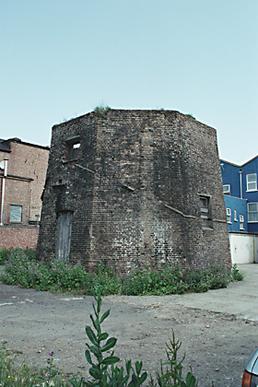
Great Mill or Ride's Mill is a Grade II listed smock mill just off the High Street in Sheerness, Kent, England, that was demolished in 1924, leaving the brick base standing. It now has a new smock tower built on it as residential accommodation.

Stone Cross Windmill is a grade II* listed tower mill at Stone Cross, Sussex, England which has been restored and is open to the public. The mill was also known as Blackness Mill and the White Mill.
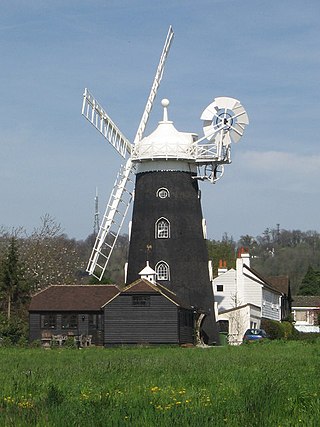
Wray Common Mill is a grade II* listed tower mill at Reigate, Surrey, England which has been converted to residential use.

Skoulding's Mill is a Grade II listed tower mill at Kelsale, Suffolk, England which has been converted to residential accommodation.

Aslacton Mill is a Grade II listed tower mill at Aslacton, Norfolk, England which is derelict.

Union Mills or Roy's Mills are a Grade II listed combined tower mill and watermill at Burnham Overy, Norfolk, England which has been converted to residential accommodation.
Mill Lane Mill is a Grade II listed tower mill at Carbrooke, Norfolk, England which has been conserved with some machinery remaining.
Kenninghall Road Mill is a Grade II listed tower mill at East Harling, Norfolk, England which has been converted to residential accommodation.
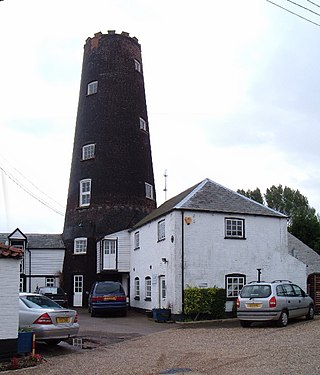
For the Gayton Windmill now in Merseyside see Gayton Windmill, Cheshire



















